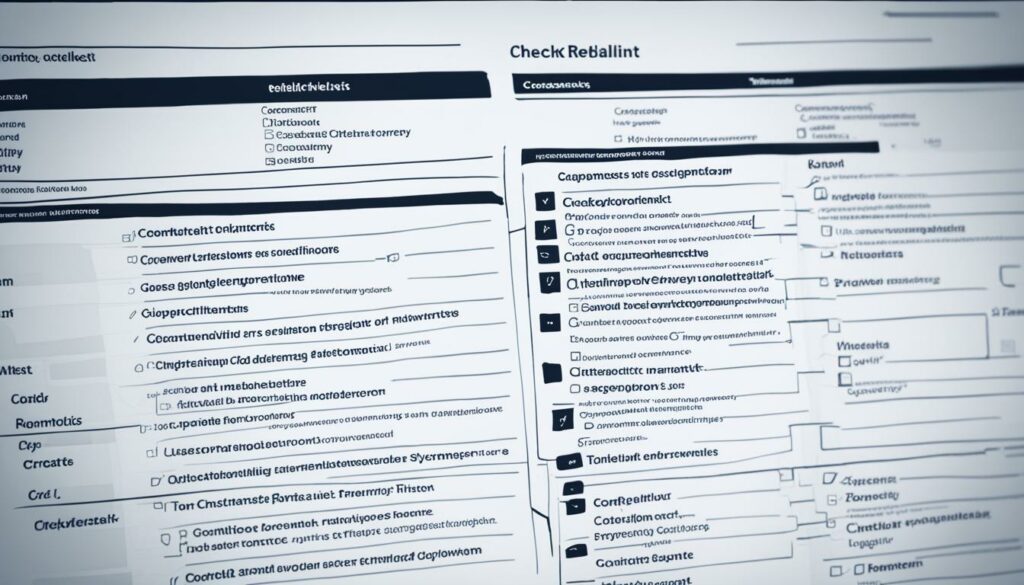In today’s digital age, where streaming platforms and OTT applications have become the norm, ensuring the reliability of hosts is paramount for delivering a seamless user experience. Host reliability testing plays a crucial role in guaranteeing website uptime and performance. Whether you’re a service provider or a business owner, understanding the importance of host reliability testing is essential to stay ahead in the competitive online landscape.
Host reliability testing entails a comprehensive evaluation of various factors that impact the performance and availability of a website. By conducting rigorous tests and simulations, potential issues and weaknesses can be identified, allowing for proactive measures to be taken to ensure optimal reliability.
In this comprehensive guide, we will delve deeper into the realm of host reliability testing, exploring its significance in the streaming platform industry and the different types of testing involved. Whether you’re new to the concept of host reliability testing or looking to enhance your existing testing practices, this guide will provide you with valuable insights and practical tips to ensure the reliability and success of your online presence.
Key Takeaways:
- Host reliability testing is crucial for website uptime and performance.
- Streaming platforms and OTT applications require robust reliability testing.
- Functional and non-functional testing are both important in host reliability testing.
- A comprehensive checklist is essential for testing OTT platforms effectively.
- Testing in production is vital for maintaining and enhancing reliability.
The Significance of OTT Reliability Testing in the Streaming Platform Realm
The booming OTT services market demands the release of high-quality apps for various devices. To captivate subscribers and receive positive feedback, leading companies prioritize OTT platform reliability testing within their Quality Assurance practices. This testing ensures quality across diverse platforms, high-quality video playback, adaptability to bandwidth fluctuations, and efficient recovery from network failures.
In the fast-paced streaming platform realm, where user expectations are high, delivering a flawless streaming experience is paramount. OTT reliability testing plays a crucial role in ensuring that viewers can enjoy uninterrupted streaming without any technical glitches.
OTT reliability testing involves testing various aspects of the streaming platform to ensure its robustness and stability. This includes:
- Platform compatibility: Testing the app’s compatibility across different devices, operating systems, and browsers to ensure seamless performance and user experience.
- Video playback quality: Conducting tests to verify the smooth playback of high-quality videos, ensuring that viewers can enjoy their favorite content without buffering or pixelation issues.
- Bandwidth adaptation: Testing the platform’s ability to adapt to fluctuations in network bandwidth, ensuring uninterrupted streaming even under varying network conditions.
- Network failure recovery: Identifying and testing the platform’s ability to recover gracefully from network failures, such as temporary loss of internet connectivity, to minimize disruption for viewers.
By conducting comprehensive OTT reliability testing, streaming service providers can confidently deliver a superior streaming experience to their subscribers. This not only helps in attracting and retaining viewers but also enhances the brand reputation and boosts customer satisfaction.
Industry Example: Netflix
“At Netflix, we place a high emphasis on OTT reliability testing. Our dedicated Quality Assurance team rigorously tests our streaming platform to ensure that our subscribers can enjoy their favorite shows and movies without any interruptions. By continuously monitoring and enhancing the reliability of our platform, we aim to provide the best streaming experience to our viewers worldwide.”
In conclusion, OTT reliability testing is a critical aspect of the streaming platform realm. By prioritizing thorough testing across diverse platforms, ensuring high-quality video playback, adaptability to bandwidth fluctuations, and efficient recovery from network failures, streaming service providers can deliver a seamless and uninterrupted streaming experience that keeps viewers engaged and satisfied.
What are the Varieties of OTT Platform Testing?
Testing is a crucial facet of ensuring the quality of an OTT platform. To guarantee a seamless user experience, various types of testing are employed. Let’s explore the different varieties of OTT platform testing:
Functional Testing
Functional tests cover a range of areas in OTT platform testing:
- UI Testing: The user interface is thoroughly tested for its responsiveness, compatibility, and visual appeal.
- Feature Testing: All the features of the platform, such as search functionality, user profiles, and recommendation algorithms, are examined for their effectiveness and accuracy.
- API Testing: The interactions and integration between different components of the platform, like content delivery networks and payment gateways, are tested.
- Compatibility Testing: The platform is tested across different devices, browsers, and operating systems to ensure consistent performance.
- Acceptance Testing: The platform is tested against predefined acceptance criteria to ensure it meets the requirements of the stakeholders and users.
Non-Functional Testing
Non-functional tests focus on the overall performance and user experience of the OTT platform:
- Performance Testing: The platform is tested under various loads to assess its response time, scalability, and stability.
- UX Testing: The user experience is evaluated, considering factors such as ease of navigation, clarity of content, and overall satisfaction.
- Localization Testing: The platform is tested to ensure its adaptability to different languages, cultures, and regions.
Testing Post-Release
Testing doesn’t stop after the initial release of the OTT platform. It continues to ensure long-term reliability:
- Smoke Testing: A quick set of tests is performed after each release to ensure basic functionalities are working correctly.
- Regression Testing: Existing functionalities are retested after updates or changes to ensure that new features do not break any existing ones.
- QA Audits: Regular audits are conducted to evaluate the testing processes and identify areas of improvement.
- Business Analysis: Testing results and user feedback are thoroughly analyzed to make informed decisions regarding the platform’s future enhancements.
To summarize, OTT platform testing encompasses a variety of functional and non-functional tests, aiming to deliver a reliable and optimal user experience. By conducting thorough testing during development and continuously testing post-release, companies can ensure the quality and success of their OTT applications.

Comparison of Functional and Non-Functional Testing
| Functional Testing | Non-Functional Testing |
|---|---|
| Focuses on specific functionalities and features | Assesses overall performance and user experience |
| Includes UI testing, feature testing, API testing, compatibility testing, and acceptance testing | Involves performance testing, UX testing, and localization testing |
| Verifies that the platform meets specific requirements | Emphasizes the usability, scalability, and adaptability of the platform |
| Performed throughout the software development life cycle | Ensures the platform’s quality and reliability |
OTT Platform Reliability Testing: A Comprehensive Checklist
When it comes to testing OTT platforms, having a comprehensive checklist is essential to ensure an optimal user experience. This checklist covers various aspects to test, including UI, UX, functionality, streaming and performance, account validation, security, billing, and cross-platform compatibility. Let’s dive deeper into each of these areas:
1. Testing UI, UX, and Functionality:
Ensure that the user interface is intuitive and visually appealing. Test the responsiveness of the design across different devices and platforms. Evaluate key features such as video recommendation algorithms, search functionality, and video playback continuation.
2. Streaming and Performance Testing:
Verify the streaming capabilities by testing different video qualities, bitrates, and resolutions. Assess the platform’s ability to handle high traffic and various network conditions. Look for any buffering or playback issues that may impact the user experience.
3. Account Validation:
Test the registration and login processes to ensure they are seamless and secure. Verify user authentication and authorization mechanisms. Confirm that users can easily recover passwords or update their account information.
4. Security and Billing Testing:
Verify that user data is protected and transmitted securely. Test payment gateways to ensure a smooth billing process for subscription-based models. Assess the platform’s ability to handle confidential user information and prevent unauthorized access.
5. Cross-Platform Testing:
Test the OTT platform across different browsers, operating systems, and devices. Verify that the user interface remains consistent and functions as intended on various platforms. Ensure that the app is optimized for both mobile and desktop experiences.
By following this comprehensive checklist for OTT platform reliability testing, you can identify and address potential issues before the platform is deployed. This ensures that users have a seamless streaming experience, leading to increased customer satisfaction and retention.

How to Ensure Reliability Through Testing of OTT Apps
When it comes to OTT apps, ensuring reliability is crucial for delivering a seamless user experience. This involves a complex process that includes planning, architecture design, automation, alpha version testing, error analysis, and correction. By following these steps, skilled engineers can analyze error reports, update the test plan, automate testing, and deliver reliable versions for subsequent testing.
One important aspect of ensuring reliability is testing in production. This involves testing the app in a real-world environment to identify any issues or vulnerabilities that may arise during actual usage. It allows developers to understand how the app performs under different conditions and make any necessary improvements to enhance reliability.
Testing in production plays a significant role in maintaining and enhancing reliability throughout the development process.
In addition to testing in production, it is essential to perform thorough testing across various scenarios and platforms. This includes testing the app’s functionality, performance, user interface, and compatibility with different devices and operating systems. By conducting comprehensive reliability testing, developers can identify and fix any issues that could potentially disrupt the user experience.
The Importance of Error Analysis
Error analysis is a crucial part of the testing process. It involves carefully examining error reports and identifying the root cause of any failures or bugs. This information is invaluable for making informed decisions on how to improve the app’s reliability.
After analyzing errors, it is important to update the test plan accordingly. This ensures that any recurring issues are addressed in subsequent testing cycles, preventing the same problems from occurring again.
The Power of Automation
Automation is a vital tool for ensuring reliable OTT apps. By automating repetitive testing tasks, engineers can save time and increase efficiency. This allows them to focus on more complex aspects of testing, such as analyzing error reports and making improvements.
Automation also improves consistency and reduces human error, ensuring that all necessary tests are carried out consistently and accurately.

Delivering Reliable Versions
Once the necessary testing and improvements have been made, developers can deliver reliable versions of the OTT app for subsequent testing and eventual release. These versions have undergone rigorous reliability testing, ensuring that users can enjoy a seamless experience.
By prioritizing reliability testing and following these steps, developers can ensure that their OTT apps meet the highest standards of performance and user satisfaction.
| Benefits of Reliable OTT Apps | Challenges of Reliability Testing |
|---|---|
| Improved user experience | Managing different devices and platforms |
| Higher user satisfaction and retention | Adapting to changing network conditions |
| Increased revenue and growth | Identifying and addressing bugs and failures |
| Enhanced brand reputation | Ensuring data security and privacy |
Conclusion
Host reliability testing is crucial for ensuring the uptime and performance of websites. As the streaming platform realm becomes increasingly competitive, businesses must prioritize OTT reliability testing to deliver a seamless user experience and stay ahead of the game.
By following a comprehensive checklist and implementing effective testing strategies, companies can guarantee the reliability and success of their OTT apps. Testing the UI, UX, and functionality, including video recommendation algorithms and key features, is essential. Additionally, streaming and performance tests, account validation, security and billing testing, and cross-platform testing are crucial to provide users with a seamless experience across devices.
With host reliability testing as a top priority, businesses can build trust with their users, gain a competitive edge, and ensure the continuous success of their websites and OTT apps in the ever-evolving digital landscape.
FAQ
Q: Why is host reliability testing important?
A: Host reliability testing is crucial for ensuring the uptime and performance of websites. It helps businesses deliver a seamless user experience and stay ahead in the competitive streaming platform realm.
Q: What is the significance of OTT reliability testing in the streaming platform realm?
A: OTT reliability testing is essential for delivering high-quality apps for various devices. It ensures quality across diverse platforms, high-quality video playback, adaptability to bandwidth fluctuations, and efficient recovery from network failures.
Q: What are the different types of testing involved in OTT platform testing?
A: OTT platform testing involves functional tests such as UI testing, feature testing, API testing, compatibility testing, and acceptance testing. It also includes non-functional tests focusing on performance, UX, and localization testing. Testing post-release encompasses smoke testing, regression testing, QA audits, and business analysis.
Q: What does a comprehensive OTT platform reliability testing checklist include?
A: A comprehensive checklist for OTT platform reliability testing includes testing UI, UX, functionality such as video recommendation algorithms and key features, video playback continuation, streaming and performance testing, account validation, security and billing testing, and cross-platform testing.
Q: What is the process for ensuring reliability through testing of OTT apps?
A: Ensuring reliability through testing of OTT apps involves planning, architecture design, automation, alpha version testing, error analysis, and correction. Skilled engineers analyze error reports, update the test plan, automate testing, and deliver reliable versions for subsequent testing. Testing in production also plays a significant role in maintaining and enhancing reliability throughout the development process.












